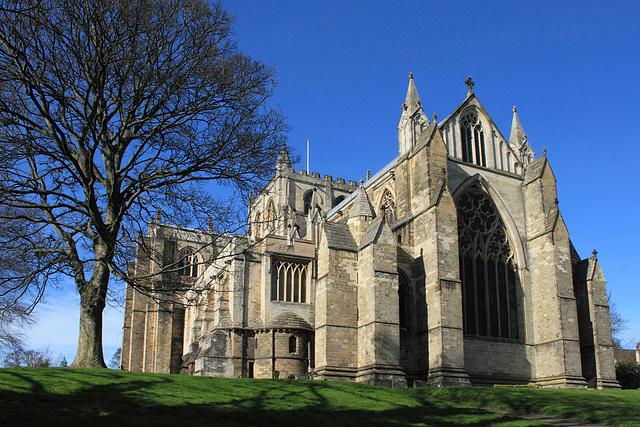Cannon over The Tyne
Coshkib Hill Farm
Yellow Dress in the Window
Knaresborough
The Pulpit, Ripon Cathedral
The Font Ripon Cathedral
The Viaduct, Knaresborough
The Cloisters Lincoln Cathedral
Stott Park Bobbin Mill
The Potting Shed
Ginger at Brimham Rocks
The Altar, Ripon Cathedral
It's That Mistle Thrush Again!
Glasgow Subway at The Riverside Museum, Glasgow
Think I may be under attack!
Drumnahunshin Farm
Speed
The Courtyard, Alnwick Castle
St Johns Co-Cathedral Valletta
30926 at Grosmont
Whorlton Bridge and Tollhouse
Church of Holy Trinity, Startforth, Co. Durham
Bowlees Postbox
A Down Girl at the top of County Down
The Deerness Valley Line
St Patrick's Cathedral, Armagh
St Patrick's Cathedral Armagh
A Light by the Cathedral
Wall Mounted Lamp post
Fountains Abbey in HDR
St Mary's Studley Royal
The Cloisters of Durham cathedral in HDR
Durham Cathedral in HDR
Ten 8324
The Photographers Studio
Durham Panorama
High and Dry at Seaton Sluice
The Pulpit of Ripon Cathedral
George Aitken, Rutherglen, Lanarkshire BK86
Grassington, North Yorkshire
The Rusty Gate
Living in the Past
Cluan Place
Steep Hill Lincoln
Castle Hill, Lincoln
Keywords
Authorizations, license
-
Visible by: Everyone -
All rights reserved
-
187 visits
Ripon Cathedral


Today's church is the fourth to have stood on this site. Saint Wilfrid brought stonemasons, plasterers and glaziers from France and Italy to build his great basilica in AD 672. A contemporary account by Eddius Stephanus tells us:
"In Ripon, Saint Wilfrid built and completed from the foundations to the roof a church of dressed stone, supported by various columns and side-aisles to a great height and many windows, arched vaults and a winding cloister."
Saint Wilfrid was buried in this church near the high altar. Devastated by the English king in AD 948 as a warning to the Archbishop of York, only the crypt of Wilfrid's church survived but today this tiny 7th-century chapel rests complete beneath the later grandeur of Archbishop Roger de Pont l’Evêque’s 12th century minster. A second minster soon arose at Ripon, but it too perished – this time in 1069 at the hands of William the Conqueror. Thomas of Bayeux, first Norman Archbishop of York, then instigated the construction of a third church, traces of which were incorporated into the later chapter house of Roger's minster.
A misericord, alleged inspiration for Lewis Carroll’s, Alice's Adventures in Wonderland.
A blemyah carving from a choir stall.
The Early English west front was added in 1220, its twin towers originally crowned with wooden spires and lead. Major rebuilding had to be postponed due to the outbreak of the Wars of the Roses but resumed after the accession of Henry VII and the restoration of peace in 1485. The nave was widened and the central tower partially rebuilt. The church's thirty five misericords were carved between 1489 and 1494. It is worth noting that the same (Ripon) school of carvers also carved the misericords at Beverley Minster and Manchester Cathedral. But in 1547, before this work was finished, Edward VI dissolved Ripon's college of canons. All revenues were appropriated by the Crown and the tower never received its last Perpendicular arches. It was not until 1604 that James I issued his Charter of Restoration.
The minster finally became a cathedral (the church where the Bishop has his cathedra or throne) in 1836, the focal point of the newly created Anglican Diocese of Ripon — the first to be established since the Reformation.
"In Ripon, Saint Wilfrid built and completed from the foundations to the roof a church of dressed stone, supported by various columns and side-aisles to a great height and many windows, arched vaults and a winding cloister."
Saint Wilfrid was buried in this church near the high altar. Devastated by the English king in AD 948 as a warning to the Archbishop of York, only the crypt of Wilfrid's church survived but today this tiny 7th-century chapel rests complete beneath the later grandeur of Archbishop Roger de Pont l’Evêque’s 12th century minster. A second minster soon arose at Ripon, but it too perished – this time in 1069 at the hands of William the Conqueror. Thomas of Bayeux, first Norman Archbishop of York, then instigated the construction of a third church, traces of which were incorporated into the later chapter house of Roger's minster.
A misericord, alleged inspiration for Lewis Carroll’s, Alice's Adventures in Wonderland.
A blemyah carving from a choir stall.
The Early English west front was added in 1220, its twin towers originally crowned with wooden spires and lead. Major rebuilding had to be postponed due to the outbreak of the Wars of the Roses but resumed after the accession of Henry VII and the restoration of peace in 1485. The nave was widened and the central tower partially rebuilt. The church's thirty five misericords were carved between 1489 and 1494. It is worth noting that the same (Ripon) school of carvers also carved the misericords at Beverley Minster and Manchester Cathedral. But in 1547, before this work was finished, Edward VI dissolved Ripon's college of canons. All revenues were appropriated by the Crown and the tower never received its last Perpendicular arches. It was not until 1604 that James I issued his Charter of Restoration.
The minster finally became a cathedral (the church where the Bishop has his cathedra or throne) in 1836, the focal point of the newly created Anglican Diocese of Ripon — the first to be established since the Reformation.
(deleted account) has particularly liked this photo
- Keyboard shortcuts:
Jump to top
RSS feed- Latest comments - Subscribe to the comment feeds of this photo
- ipernity © 2007-2024
- Help & Contact
|
Club news
|
About ipernity
|
History |
ipernity Club & Prices |
Guide of good conduct
Donate | Group guidelines | Privacy policy | Terms of use | Statutes | In memoria -
Facebook
Twitter

Sign-in to write a comment.